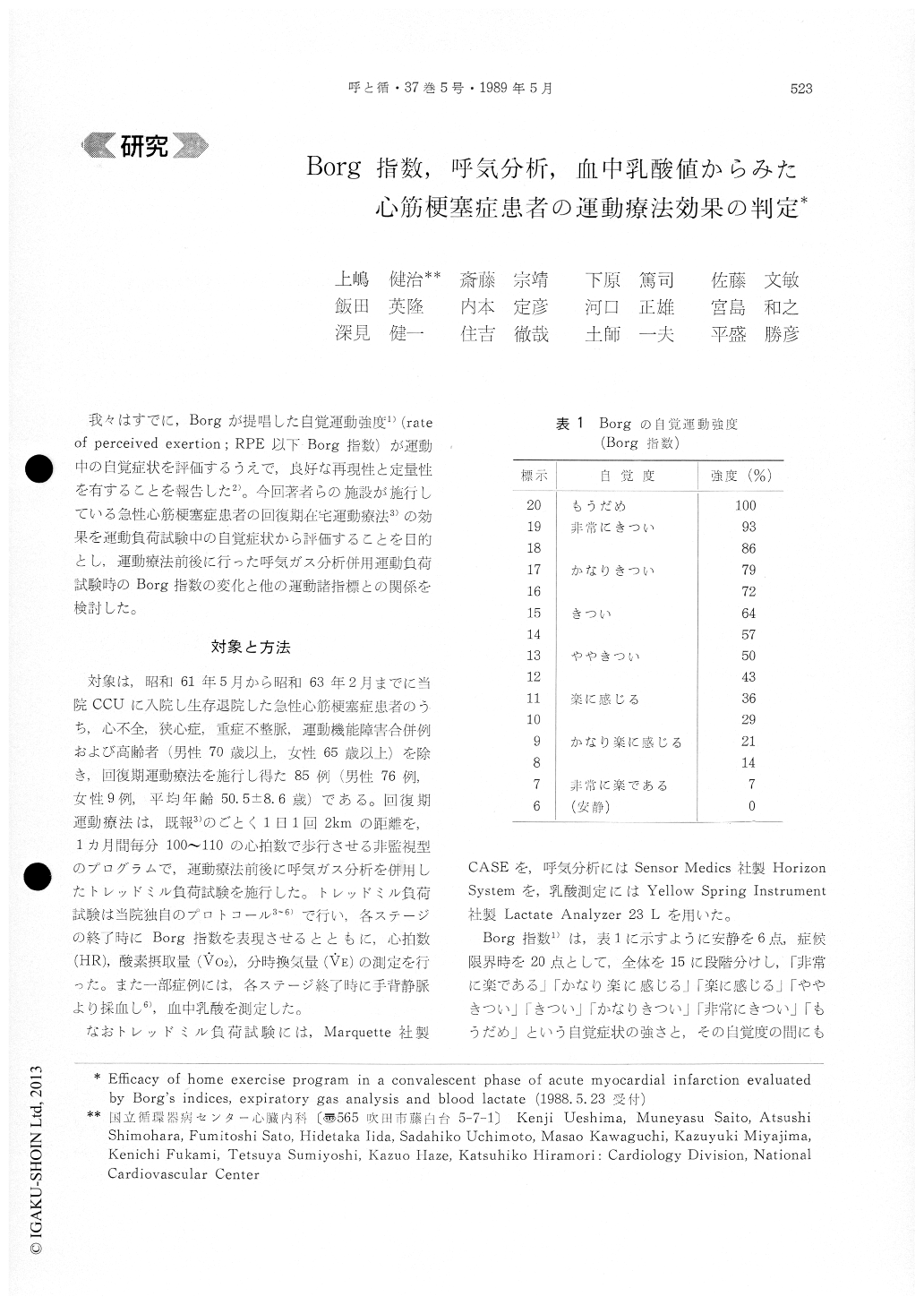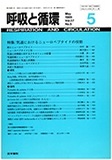Japanese
English
- 有料閲覧
- Abstract 文献概要
- 1ページ目 Look Inside
我々はすでに,Borgが提唱した自覚運動強度1)(rateof perceived exertion;RPE以下Borg指数)が運動中の自覚症状を評価するうえで,良好な再現性と定量性を有することを報告した2)。今回著者らの施設が施行している急性心筋梗塞症患者の回復期在宅運動療法3)の効果を運動負荷試験中の自覚症状から評価することを目的とし,運動療法前後に行った呼気ガス分析併用運動負荷試験時のBorg指数の変化と他の運動諸指標との関係を検討した。
The Borg's indices, the rate of perceived exertion have been widely accepted to evaluate subjective symptoms semi-quantitatively in exercise tests. Weapplied the indices to evaluate the efficacy of our home exercise program in patients with acute myocardial infarction.
Eighty-five patients were entered in our home exercise program after their discharge from the hospital. This program consisted of eveyday 2 km walk-jog exercise for 1 month keeping their heart rate at 100-110/min during the exercise. Before and 1 month after their discharge, they underwent treadmill exercise tests with expiratory gas analysis and a measurement of blood lactate.
In the treadmil tests performed before and after the training, VO2 and heart rate increased linearly with Borg's indices, however VE and blood lactate had disproportionate increases after Borg's 13 which is considered to be the anaerobic threshold (AT). In fact, AT measured individually by expiratory gas analysis and blood lactate, appeared at Borg's 13 in 53% of the patients. After 1 month physical training, VO2 and heart rate significantly increased at the same Borg's indices, but there was no significant changes in blood lactate at the same Borg's score before and after the training.
These results suggest that, in patiens with acute myocardial infarction, exercise performance significantly increased at any score of subjective symptoms and that Borg's indices may reflect the blood lactate levels.
It is concluded that Borg's indices, closely related to the dynamics of blood lactate, are not only useful in quantifying subjective symptoms but also to estimate the efficacy of physical training.

Copyright © 1989, Igaku-Shoin Ltd. All rights reserved.


